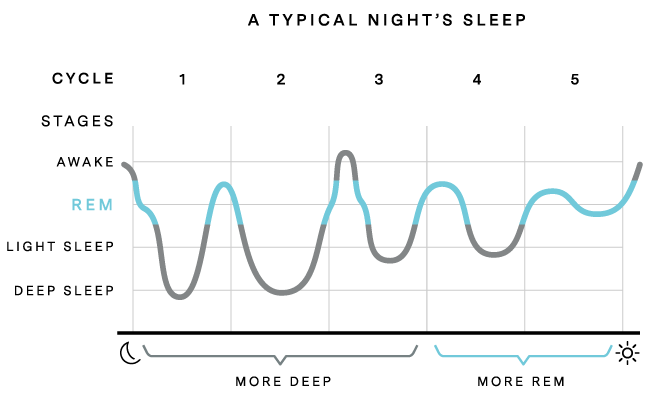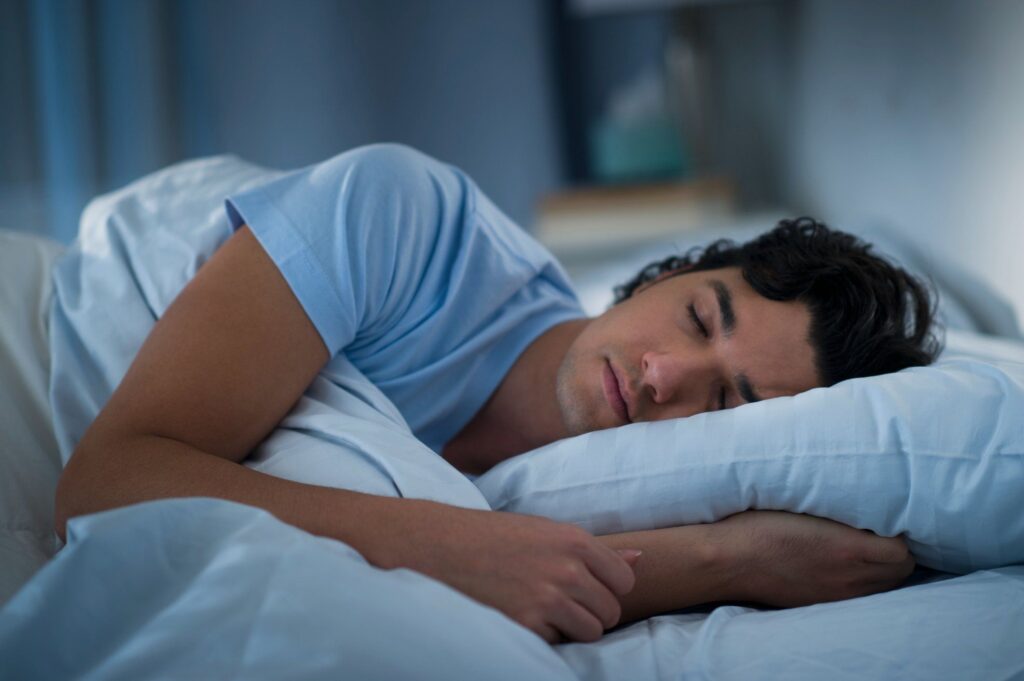
In our increasingly fast-paced world, the pursuit of a truly restful night’s sleep often feels like an elusive quest. Many of us find ourselves grappling with inconsistent sleep patterns, battling daytime grogginess, or simply wondering how to optimize this essential biological function. Yet, sleep is not merely a passive state of inactivity; it is a profoundly active and vital process, essential for restoring our immune, nervous, skeletal, and muscular systems, and maintaining critical cognitive and endocrine functions.
Understanding the intricate mechanisms behind sleep is the first step towards mastering it. Experts emphasize that by aligning our daily habits with our body’s natural rhythms and understanding the physiological processes at play, we can significantly enhance our sleep quality and, consequently, our overall well-being. This journey into the science of sleep moves beyond superficial tips, delving into the core biological principles that govern our rest.
As a senior media editor, I’ve seen countless trends and quick fixes for sleep. However, the most credible and sustainable path to better sleep lies in embracing evidence-based knowledge. Let’s embark on an in-depth exploration of key scientific insights and practical strategies, designed to help you unlock the deep, restorative sleep your body and mind truly need. We’ll uncover the biological underpinnings and actionable advice that form the bedrock of a truly effective approach to nightly rest.
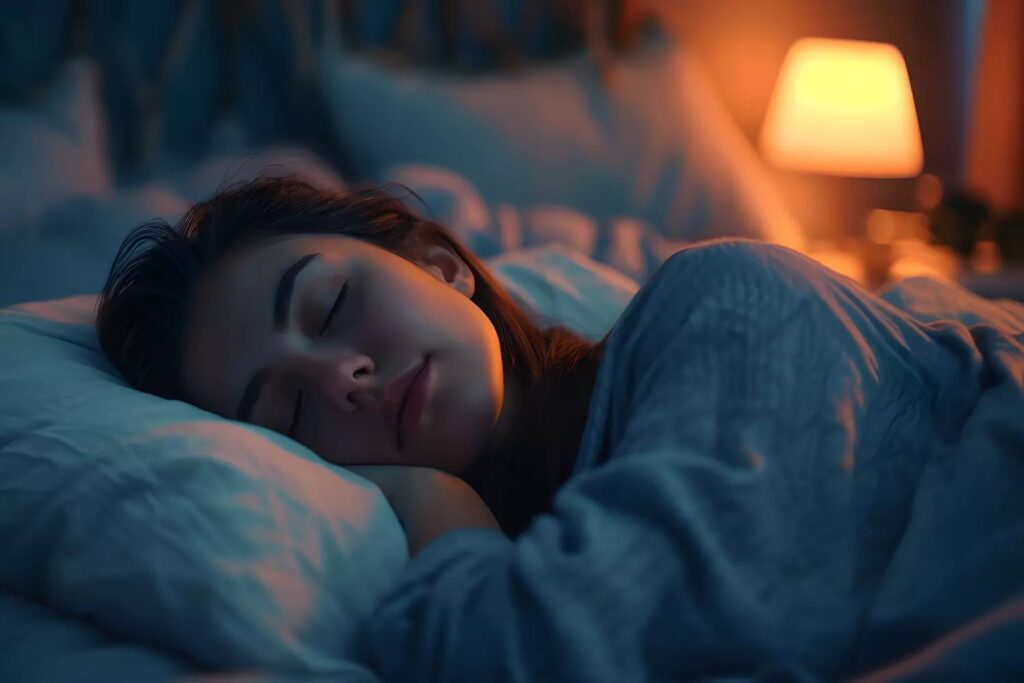
1. **The Fundamental State: What is Sleep and Its Stages?**
Sleep is a naturally recurring resting state of mind and body, characterized by reduced mental and physical activity. It involves an altered state of consciousness where certain sensory activity is inhibited, and there’s a marked decrease in muscle activity and interactions with the surrounding environment. While distinct from wakefulness due to a decreased ability to react to stimuli, sleep is far from a passive void, involving active brain patterns that differentiate it from conditions like a coma or disorders of consciousness.
During sleep, the body cycles through two primary, distinct modes: rapid eye movement (REM) sleep and non-REM (NREM) sleep. These two states are so fundamentally different that physiologists identify them as separate behavioral states. NREM sleep occurs first, and after a transitional period, progresses into what is known as slow-wave sleep or deep sleep. This initial phase is crucial, as it sets the stage for the body’s major restorative processes.
Non-REM sleep is further divided by the American Academy of Sleep Medicine (AASM) into three stages: N1, N2, and N3, with N3 being the deepest phase, also called delta sleep or slow-wave sleep. During NREM sleep, noticeable physiological changes occur, including a fall in body temperature and heart rate, and a significant reduction in the brain’s energy consumption. It is during this time that the brain restores its supply of adenosine triphosphate (ATP), the crucial molecule for short-term energy storage and transport.
REM sleep, also known as paradoxical sleep, follows NREM sleep and represents a smaller portion of total sleep time. It is the primary stage for dreams, characterized by desynchronized and fast brain waves, rapid eye movements (hence the name), virtual paralysis of the body, and a suspension of homeostasis. The entire sleep cycle, alternating between NREM and REM, takes approximately 90 minutes and ideally repeats 4–6 times in a good night’s sleep. Understanding these stages is foundational to appreciating the complex work your body performs each night.
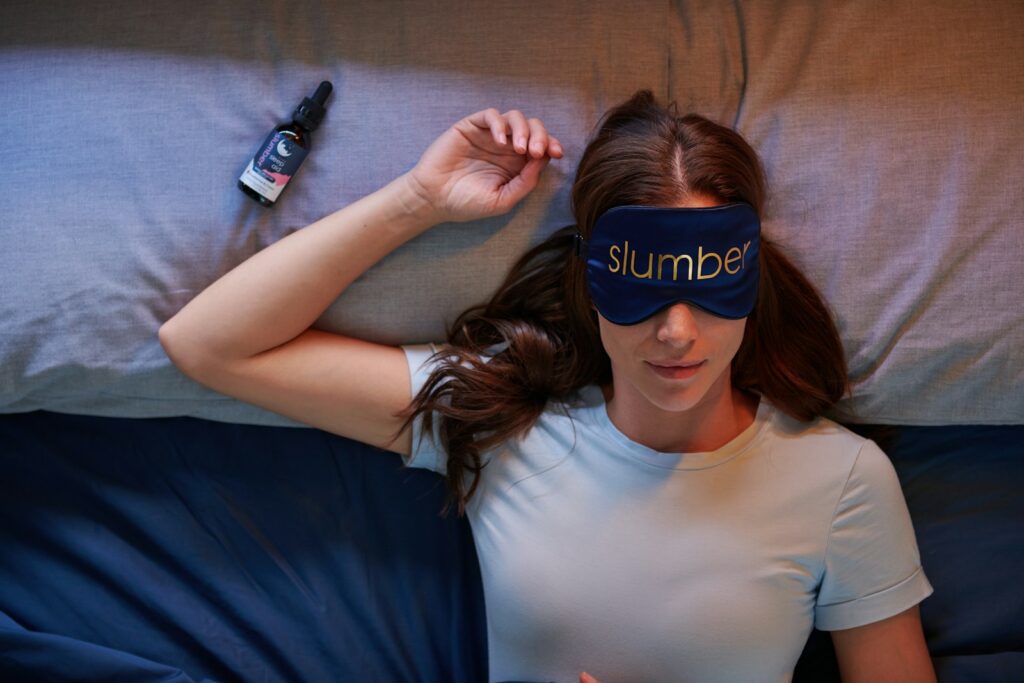
2. **Harnessing Your Internal Clock: Understanding Circadian Rhythms**
Sleep timing is primarily controlled by the circadian clock, often referred to as Process C. This sophisticated neurochemical system utilizes environmental cues, predominantly light signals, to establish an internal day-night rhythm within the body. Its primary function is to counteract the natural homeostatic drive for sleep during the day (for diurnal animals like humans) and subsequently augment it at night, guiding our natural inclination to sleep when it’s dark.
The suprachiasmatic nucleus (SCN), a specific brain area located directly above the optic chiasm, is considered the most critical hub for this internal clock. This master pacemaker exhibits conspicuous oscillation activity, intensifying during what it perceives as ‘subjective day’ and diminishing during ‘subjective night.’ This rhythmic activity influences numerous bodily functions, including the sinusoidal oscillation of body temperature and the release of various hormones, setting the stage for optimal sleep and wakefulness.
An organism whose circadian clock aligns with external signals, such as the natural light-dark cycle, is said to be entrained. This entrained rhythm demonstrates remarkable persistence; even if external signals like light suddenly disappear (as in experimental conditions with constant light or darkness), an individual will continue to experience rhythmic fluctuations in body temperature and melatonin, albeit on a period slightly exceeding 24 hours. Under natural conditions, light signals serve to regularly adjust this internal period, ensuring it closely matches the Earth’s exact 24-hour day.
The circadian clock’s influence extends to various hormonal secretions crucial for health. It has a direct neural connection to the pineal gland, which releases the sleep-regulating hormone melatonin at night. Conversely, cortisol levels typically rise throughout the night, peaking in the awakening hours, and then diminish during the day. Circadian prolactin secretion also begins in the late afternoon, particularly in women, and is further augmented by sleep-induced secretion, reaching its peak in the middle of the night. This intricate hormonal orchestration underscores the profound influence of your internal clock on virtually every aspect of your sleep and waking life.

3. **The Blue Light Blocker: Managing Artificial Light Exposure**
Modern human sleep patterns have been substantially altered by the pervasive use of artificial light, a factor profoundly impacting our internal circadian clock. This clock relies heavily on light signals as its primary clues about the time of day. Even small amounts of light exposure during the night can disrupt this delicate balance, suppressing the secretion of melatonin, a hormone vital for regulating the sleep cycle, and consequently increasing body temperature and wakefulness.
Digital devices like smartphones, tablets, and televisions are common sources of this artificial light, emitting significant amounts of blue light. Blue light is a specific wavelength typically associated with daytime, and its presence after sunset sends conflicting signals to our brain. This potent form of light exerts the strongest effect on our circadian rhythm, leading to valid concerns that using screens before bedtime can directly interfere with our ability to fall asleep and maintain quality rest.
Indeed, short pulses of light, particularly at critical moments in the circadian cycle, have the power to significantly ‘reset’ our internal clock. While this mechanism can be beneficial for adjusting to new time zones or regulating rhythms for shift workers, uncontrolled exposure to blue light in the evening can lead to chronic circadian desynchronization. Many people regularly look at television and other screens before going to bed, a habit that directly exacerbates this disruption, making it harder for the body to naturally transition into a sleep-ready state.
To mitigate the disruptive effects of artificial light, especially blue light, experts recommend creating a dark and peaceful sleep environment. This includes avoiding electronic devices in the bedroom, particularly in the hours leading up to bedtime. By minimizing exposure to stimulating light, you help your pineal gland release melatonin as intended, signaling to your body that it’s time to wind down. Embracing practices that dim your environment in the evening can significantly improve your ability to entrain your circadian rhythm to a natural sleep-wake cycle.

4. **Clearing Your Sleep Debt: The Science of Process S**
Process S, also known as sleep-wake homeostasis, is the biological driver that creates a growing need for sleep the longer an organism remains awake. Essentially, the longer you stay awake, the more your body accumulates a ‘sleep debt,’ which must eventually be repaid. This homeostatic process works in balance with your circadian clock (Process C) to regulate the precise timing and duration of your sleep, ensuring that the necessary amount of rest is achieved after periods of wakefulness.
At a neurochemical level, Process S is largely driven by the accumulation of adenosine in the forebrain during prolonged wakefulness. Adenosine acts as a neurotransmitter that inhibits many of the bodily processes associated with wakefulness. As its levels increase, it disinhibits the ventrolateral preoptic nucleus, which in turn allows for the inhibition of the ascending reticular activating system, thereby promoting sleep. Conversely, adenosine levels decrease during the sleep-recovery period, highlighting its role as a crucial homeostatic regulator of sleep.
The consequences of sleep deprivation—an induced or perceived lack of sleep—are widespread and impactful. Chronically insufficient sleep tends to cause slower brain waves in the frontal cortex, leading to a shortened attention span, increased anxiety, impaired memory, and a generally grouchy mood. Neurophysiological and functional imaging studies have consistently demonstrated that the frontal regions of the brain are particularly responsive to this homeostatic sleep pressure, underscoring the vital cognitive role of adequate rest.
While there’s some debate on the exact limits of sleep debt accumulation, it clearly shows evidence of being cumulative. Subjectively, humans often report reaching maximum sleepiness approximately 30 hours after waking. Moreover, common stimulants like coffee, tea, and other sources of caffeine directly interfere with Process S by temporarily blocking the effect of adenosine. This action postpones sleep onset (sleep latency), and reduces both the total duration and overall quality of sleep, making it harder for your body to naturally clear its accumulated sleep debt.

5. **Crafting Your Sleep Sanctuary: Essential Sleep Hygiene Practices**
Good sleep hygiene refers to a set of practices and habits that are necessary to have good sleep quality and full daytime alertness. Implementing strong sleep hygiene habits is one of the most effective ways to improve sleep health, leading to better physical and mental well-being through the necessary rejuvenation that only restful sleep can provide. These practices address various environmental and behavioral factors that significantly influence your ability to fall asleep, stay asleep, and wake up feeling refreshed.
One of the cornerstones of good sleep hygiene is establishing a consistent sleep schedule. Going to sleep at the same time every night and waking up around the same time each morning, even on weekends, helps to reinforce your body’s natural circadian rhythm. This regularity trains your internal clock, making it easier for your body to anticipate sleep and wakefulness, reducing the instances of circadian desynchronization that many modern humans experience due to varied schedules.
Creating a peaceful and relaxing sleep environment is equally crucial. This involves ensuring your bedroom is dark, quiet, and cool. Installing heavy drapes or blackout blinds can effectively block out all external sunlight, which, as we’ve discussed, is a powerful signal to your circadian clock. Keeping the room clean and uncluttered also contributes to a sense of calm and order, which can be conducive to relaxation before bed. White noise, often overlooked, appears to be a promising treatment for insomnia and can help mask disruptive sounds.
Furthermore, it is vital to avoid electronic devices in the bedroom. Screens from televisions, smartphones, and computers emit blue light that can suppress melatonin production, interfering with your body’s natural sleep signals. Designating the bedroom solely for sleep and intimacy, removing work materials and other stimulating items, helps to create a mental association between this space and rest. By consciously crafting a sleep sanctuary, you are not just improving your bedroom, but actively nurturing a healthier relationship with sleep itself, preparing your body and mind for optimal rest each night.

6. **The Vital Connection: Exercise and Your Sleep Cycle**
Beyond physical health and mood benefits, regular exercise plays a crucial role in promoting better sleep. Physical activity throughout your day is a cornerstone of good sleep hygiene, helping your body wind down and achieve restorative rest. Research supports this, suggesting exercise improves sleep for most people and can alleviate insomnia.
However, timing is everything when integrating exercise into your daily routine for optimal sleep benefits. A 2010 review of published scientific research indicated that the ideal window for exercise might be anywhere from four to eight hours before bedtime. This allows your body sufficient time to cool down and for stimulating hormones to subside. While almost any time of day offers sleep advantages, heavy exercise taken shortly before bedtime may disturb sleep, making it harder to fall asleep due to elevated heart rate and body temperature.
The positive impact of exercise extends beyond merely falling asleep faster. Regular physical activity can enhance the depth and quality of your sleep, helping you cycle more effectively through the various sleep stages. This deeper, more efficient sleep amplifies the restorative processes that occur overnight, contributing to improved memory, mood, and overall cognitive function. It’s a virtuous cycle: better sleep provides more energy for exercise, and exercise promotes better sleep.
Even mild evening exercise benefits elderly individuals, improving sleep, cognitive tasks, and mental health. The key is finding and consistently engaging in a routine that fits your lifestyle. While exact mechanisms are still researched, evidence strongly points to exercise as a powerful, natural sleep aid, essential for everyone’s health regimen.
Read more about: Beyond the Pace: Your Definitive Guide to Running Mechanics, Injury Prevention, and Holistic Well-being

7. **Fueling Rest: The Crucial Role of Diet and Stimulants**
What you consume, especially before bedtime, profoundly impacts your sleep quality. Diet and stimulants are significant factors that either support or undermine your body’s natural ability to transition into and maintain restorative sleep. Paying close attention to eating and drinking habits is an actionable step toward better nightly rest.
Perhaps the most common sleep disruptors are stimulants such as coffee, tea, and other sources of caffeine. These substances exert their effect by temporarily blocking the action of adenosine, a neurotransmitter that accumulates in your brain during wakefulness and drives your need for sleep (Process S). By interfering with adenosine, caffeine essentially tricks your brain into feeling less sleepy, postponing sleep onset and making it harder for your body to naturally acknowledge its accumulated ‘sleep debt’.
The consequences of caffeine consumption too close to bedtime are multifold. It can prolong sleep latency, meaning it takes you longer to fall asleep, and significantly reduce both the total duration and overall quality of your sleep. This disruption makes it challenging for your body to cycle through the necessary stages of sleep, ultimately leaving you feeling less refreshed and hindering crucial restorative processes. Avoiding caffeine in the hours before going to sleep is a widely recommended sleep hygiene practice.
Beyond stimulants, broader dietary choices also play a role in how well you wake up feeling. Research indicates that determinants of alertness after waking include the quantity and quality of prior sleep, physical activity, and even a carbohydrate-rich breakfast that elicits a low blood glucose response. This suggests that stable blood sugar levels, supported by balanced nutrition, can set a positive tone for your day and indirectly support your overall sleep-wake cycle.
To optimize sleep, limit or avoid caffeine and other stimulants several hours before bedtime. Focus on a balanced diet, mindful of how foods affect you, especially in the evening. Conscious dietary choices actively support your body’s natural sleep-promoting mechanisms for a more restful night.
Read more about: Your Sleep Is Sabotaging Your Gains: Unlocking Peak Muscle Growth and Fat Loss Through Rest
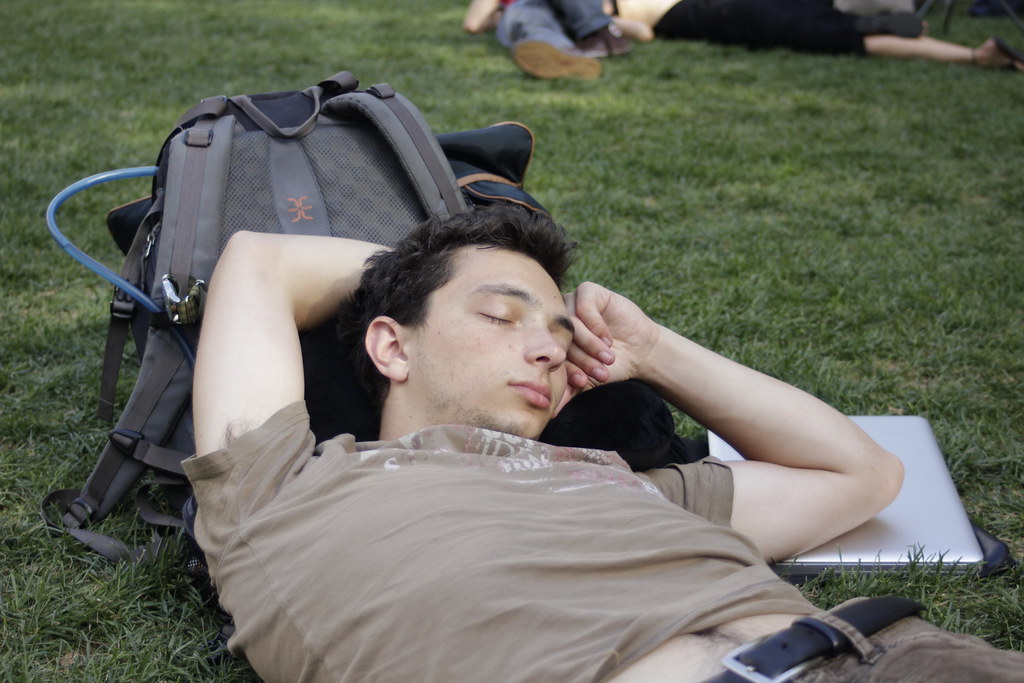
8. **The Power Nap: Strategic Benefits of Daytime Rest**
Naps, often stereotyped as a childhood indulgence, are in fact a valuable tool for adults seeking to supplement their nighttime sleep or combat daytime fatigue. A nap is simply a short period of sleep taken during the daytime, and while associated with youth, around one-third of American adults regularly partake in this practice. When used strategically, napping can offer significant benefits for alertness, mood, and cognitive function, without necessarily replacing a full night’s rest.
The key to a successful nap lies in its duration. Researchers have shown that the optimal nap duration is typically around 10–20 minutes. This timeframe allows you to achieve a refreshing burst of rest without entering slow-wave sleep, which is the deepest period of sleep and can take at least 30 minutes to reach. The goal is to wake up before entering these deeper cycles, as napping too long and entering slow-wave sleep can make it difficult to awaken from the nap, leading to a period of drowsiness known as sleep inertia, which leaves you feeling more groggy than refreshed.
Beyond merely boosting alertness, napping has been linked to tangible health benefits. For instance, the traditional “siesta” habit, involving a mid-day nap, has been associated with a notable 37% lower coronary mortality. This protective effect is possibly attributed to reduced cardiovascular stress that is mediated by daytime sleep. Such findings underscore the potential physiological advantages of incorporating short periods of rest into your daily schedule, particularly for heart health.
Naps also profoundly impact cognitive performance and mental well-being. Short naps at mid-day, combined with mild evening exercise, effectively improve sleep, cognitive tasks, and overall mental health, especially for elderly individuals. This demonstrates how strategic daytime rest complements other healthy habits. While certain napping patterns have associations with obesity risk, the context and duration of the nap remain crucial.
To harness the power of napping, aim for that sweet spot of 10-20 minutes, ideally in the early to mid-afternoon to avoid interfering with nighttime sleep. A brief, strategic nap can act as a reset button for your brain, improving alertness, enhancing mood, and even supporting your long-term health, making it a valuable component of a holistic approach to sleep.
Read more about: Unlock Your Best Rest: Oprah Winfrey and Expert Secrets for a Full Night’s Sleep

9. **Sleep Across the Lifespan: Tailoring Recommendations by Age**
It’s a common misconception that everyone needs the same amount of sleep. In reality, human sleep needs vary significantly not only among individuals but most notably across different age groups. Understanding these age-specific requirements is crucial for ensuring optimal development in children and maintaining health and cognitive function throughout adulthood. Sleep is considered adequate when it prevents daytime sleepiness or dysfunction, allowing individuals to thrive in their daily lives.
Newborns (0–3 months) require the most sleep, typically 14 to 17 hours daily, a demand that steadily declines with age: infants (4–11 months) need 12 to 15 hours, toddlers (1–2 years) 11 to 14 hours, and preschoolers (3–4 years) 10 to 13 hours. This extensive early childhood sleep is directly linked to immense brain growth, with a majority of development occurring during periods of high sleep rates. The hours children spend asleep profoundly influence their ability to perform cognitive tasks and often contribute to higher cognitive attainments and easier temperaments.
Sleep also plays a pivotal role in language development during these formative years. Researchers have demonstrated that infants who sleep within four hours of learning a new, faux language can recall its rules far better than those who stay awake longer. Furthermore, a direct correlation exists between infants’ sleep duration at 12 months and their vocabulary at 26 months, with longer sleep linked to richer vocabularies. For children, establishing a structured bedtime routine—including rituals like reading, bathing, and brushing teeth—is highly beneficial, improving sleep quality and instilling healthy sleep hygiene habits for the future.
As individuals mature, sleep needs continue to evolve. School-age children (5–12 years) typically require 9 to 11 hours, while teenagers (13–17 years) benefit from 8 to 10 hours. Adults (18–64 years) generally need 7 to 9 hours, and older adults (65 years and over) usually find 7 to 8 hours sufficient. These recommendations, such as those revised by the National Sleep Foundation in 2015, are important guidelines, although individual variations mean some may thrive on slightly more or less, provided they experience no daytime impairment.
Recognizing these age-specific sleep requirements is crucial for promoting lifelong health. Ensuring children, teenagers, and adults receive appropriate restful sleep supports immediate well-being, long-term cognitive function, emotional stability, and overall physical health. Regular sleep is an adaptable need that deserves tailored attention at every stage of life.

10. **Beyond Rest: Uncovering Sleep’s Restorative and Memory-Enhancing Functions**
While we intuitively understand sleep as a period of rest, its true purpose extends far beyond mere inactivity. Sleep is a profoundly active biological process that serves two primary and indispensable functions for our well-being: physical and mental restoration, and the crucial processing and consolidation of memories. These intricate activities are foundational to maintaining our health, cognitive abilities, and emotional balance.
During sleep, particularly during slow-wave sleep, the human organism engages in extensive physical restoration. Most of the body’s systems enter an anabolic state, actively helping to repair and rebuild the immune, nervous, skeletal, and muscular systems. This reduced rate of metabolism in both the brain and body allows for critical restorative processes to take place, including the secretion of anabolic hormones like growth hormones. These vital functions maintain our mood, memory, and cognitive function, and play a large role in the proper operation of the endocrine and immune systems.
A remarkable aspect of brain restoration during sleep involves the glymphatic system. Research has revealed that the sleeping brain removes metabolic end products, such as amyloid, at a faster rate than during an awake state. This cleansing mechanism, driven by increased cerebrospinal fluid flow, acts much like the lymphatic system for the body, clearing waste and facilitating the synthesis of molecules that protect the brain. The brain’s concentration of glycogen, a critical energy store, also increases during sleep, replenishing what was depleted during wakefulness, underscoring sleep’s essential restorative effect on the brain itself—a process so fundamental it is observed across most of the animal kingdom.
Beyond physical repair, sleep is indispensable for memory processing and learning. It is widely accepted that sleep supports the formation of long-term memory and enhances the recall of previous learning experiences. However, the benefits are nuanced, depending on the phase of sleep and the type of memory. For instance, declarative memory, which involves facts and events, improves more during early sleep (dominated by slow-wave sleep, SWS), while procedural memory, related to skills and habits, shows greater improvement during late sleep (dominated by REM sleep).
This memory consolidation is explained by the active system consolidation hypothesis. It posits that during NREM sleep, repeated reactivations of newly encoded information in the hippocampus facilitate its stabilization and gradual integration into pre-existing knowledge networks in the neocortex. This intricate dialogue between the hippocampus, which temporarily holds new information, and the neocortex, responsible for long-term storage, occurs in sync with hippocampal sharp-wave ripples and thalamo-cortical spindles, forming what is believed to be a prerequisite for creating persistent long-term memories.
Targeted memory reactivation (TMR) experiments further highlight sleep’s crucial role, demonstrating how associated cues during sleep can trigger and strengthen memory traces. These nocturnal reactivations, often coordinated by theta activity, reinforce existing memories and can enhance subsequent recall performance. This profound ability to process, consolidate, and integrate new information makes sleep a vital, active workshop for the brain, essential for learning, cognitive function, and our very essence of self.

